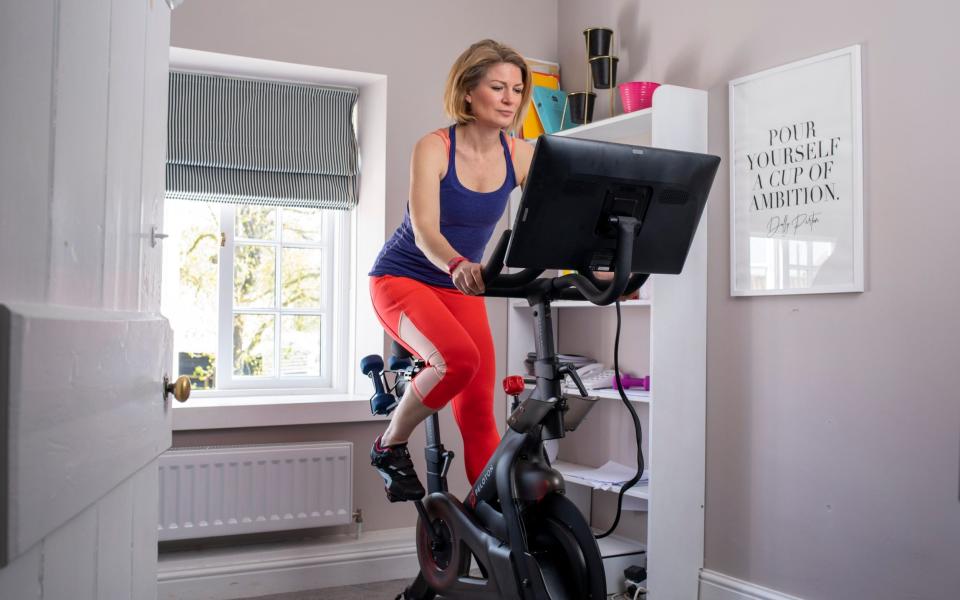The household luxuries that now cost a small fortune to run

The average energy bill will rise by a fifth to £3,000 from April, having already doubled in the past year. Since prices shot up, many of us have been trying to cut our bills, by adding insulation and cutting out draughts.
But often the most efficient way of slashing usage – and bills – is cutting down or switching off those everyday luxuries that consume a huge amount of energy but are built into our homes.
So how much are these luxuries costing you to run? Below we crunch the numbers.
Hot tubs
During lockdowns, when we were trapped in our homes, many of us splashed out on a true luxury: a hot tub. For months they were sold out, and those that were available were sold at very high prices.
Now, those left with one languishing in the back garden will find that they can add a hefty sum to energy bills. Hot tubs have to be kept at a high ambient temperature – usually around 38c. Like swimming pools, it means they continue to gobble up energy even when they are not in use.
The most efficient hot tubs cost around £1 a day to run last spring, but would cost around £1.20 a day under current energy prices, according to figures from the comparison website Uswitch. However, the worst-insulated hot tubs could cost around £7.20 per day to run now, compared with £6 last year.
If you were to keep the hot tub on every day it would cost around £440 to £2,600 per year.
“Make sure you get a well-fitted cover, which forms an air-tight seal, otherwise heat will constantly escape and cost you more money,” says Natalie Mathie of Uswitch.
Exercise equipment
Installing a home gym or panic-buying exercise equipment was a hallmark of lockdown, when gyms were shut. But they are relatively low cost to run: many treadmills use power of 300 to 900 watts. If you use it for 20 hours a month, you’ll use 6kwh to 18kwh – putting the cost at around £2 to £6.
Meanwhile an exercise bike such as a Peloton costs around £2 a month if you use the bike four hours a week.

Swimming pools
The summer of 2020 saw a boom in swimming pool purchases as the coronavirus restrictions meant people spent more time in their gardens. But the cost of heating the pool may have tripled since then.
Peter Joyce, the managing director of maintenance firm Poolstore, says the most common pool size is 12ft by x 24ft, holding around 40,000 litres of water. The average heat required per day is 46.5 kwh of energy, or 6,280 kwh across a four to five-month season.
With electricity prices currently at 34.0p per kwh, the average price to heat a pool over the summer months would be around £2,135 on electricity. However, many owners have a gas heater or a heat pump to bring costs down – gas would cost £630 per season and a heat pump would bring the cost down to £475.
An above ground swimming pool, made from steel and PVC and containing around 8,000 litres of water, can be picked up for a few hundred pounds. But the cost of heating these will still be around £430 per season.
“We are seeing a lot of people complain about the cost, but people still seem willing to pay up. During lockdown people bought a lot of above ground pools and heaters for them and industry was booming. But this year it will be more expensive than ever to heat a pool so it could be a bad year for us,” says Joyce.
Underfloor heating
Demand for underfloor heating has grown steadily over the past few years as systems have become more energy efficient and easier to control. A recent report from AMA Research found underfloor heating is one of the fastest-growing sectors of the UK heating industry, accounting for 8pc market share by value in 2021.
So how much does underfloor heating cost to run? It depends on the size and type of system, but a medium-sized eight sq m bathroom would currently cost around £50 a month to run, according to energy consultancy GreenMatch. This assumes you have the heating on for two hours in the morning and two hours in the evening.
Agas
An Aga, a cast iron oven that can also double as a heater, is a kitchen staple in many rural or larger homes. Agas are permanently on and constantly generate heat, meaning they require a lot of energy.
Many owners use their Aga to dry laundry. Heat spreads beyond the kitchen, delaying the need to turn the central heating on in colder months. They are typically switched off in the summer months and an alternative oven is used for cooking.

The cost of running an Aga will depend on which model you have and whether it's gas or electric. Current costs range from £18 a week to £50 a week, according to the Aga website.
Gas-fired Agas are the most expensive but newer electric models are cheaper to run.
Jo Milnes, 53, from East Yorkshire, has owned an Aga for 20 years. The Aga currently costs her more than £35 on gas but she says she can't switch it off as it's her main method of cooking. “We have no other oven or hob in the kitchen. We do have a microwave and air fryer but these alone wouldn't allow for the variety of meals cooked in the house.
“We had our kitchen redone three years ago and never thought of replacing our Aga with something more energy efficient. But the cost of living crisis is certainly something we couldn’t anticipate or plan for three years ago.
“The only bonus is that as it's constantly on, I've moved my home office into the kitchen to save putting the heating on in the office.”

 Yahoo Finance
Yahoo Finance 